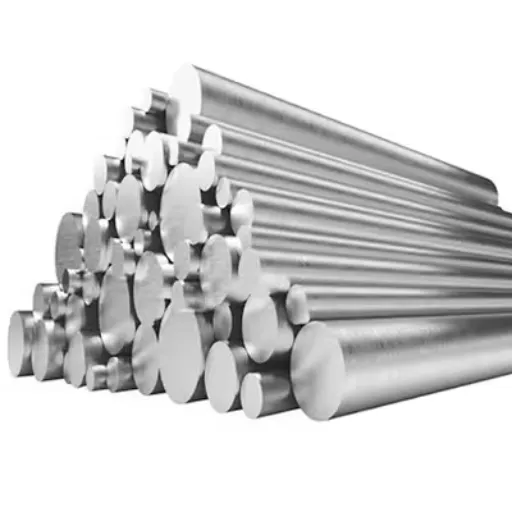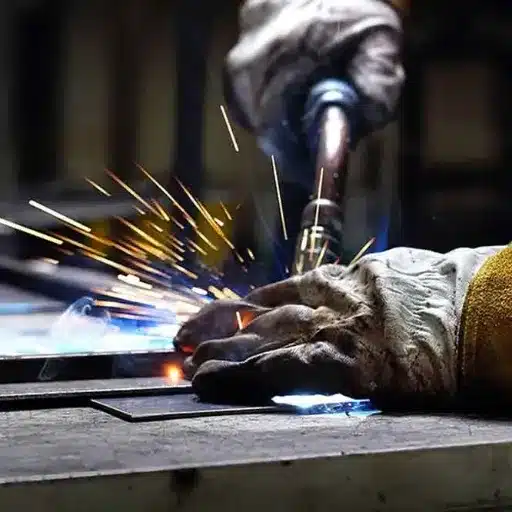Regarding top contending materials, 18-8 stainless steel takes the cake in terms of versatility across different industries because it is heavily relied on. This alloy is a standard among building, manufacturing, and consumer goods because of its aesthetic appeal, durability, and corrosion resistance. But what exactly makes 18-8 stainless steel so special? What are its core applications, and how does it withstand different environments? This article examines 18-8 stainless steel’s defining properties, unique traits, and the products and industries these eye-popping performances support. Regardless if you are a thinker, a designer, a builder, or just someone curious about the world of material science”,s I’m sure this article focusing on 18-8 stainless steel will provide helpful information for you as a reader, given this is one of the most utilized alloys in our modern day world.
What is 18-8 Stainless Steel?
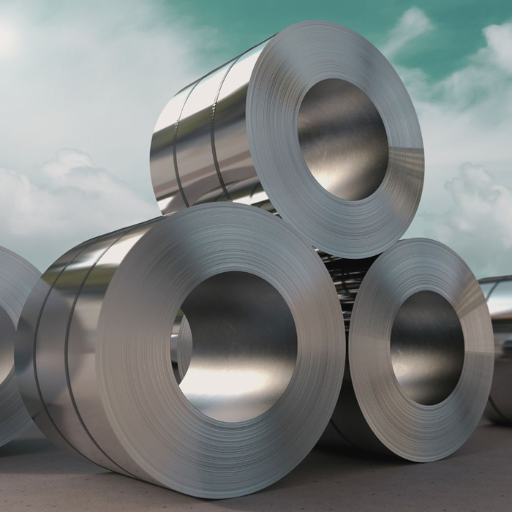
Like other stainless steel grades, 18-8 stainless steel has good tensile strength. It contains approximately 8% Ni and 18% Cr. Cr and Ni provide corrosion and moisture resistance and withstand oxidation, giving it non-magnetic characteristics. This material, part of the 300 series of austenitic stainless steel, is well known for its high durability, strength, and ease of fabrication. 18-8 stainless steel performs well in various environments, including heat and moisture; due to all these properties, this material is a popular choice for kitchen utensils, fasteners, pipes, and even medical pipes.
Properties of 18-8 Stainless Steel
The term 18-8 stainless steel is used to describe stainless steel grades having approximately 18% chromium and 8% nickel. This provides an excellent balance of strength mechanically and against corrosion, making it a popular material across many industries. The chromium content forms a protective oxide layer on the surface, preventing rust, while nickel enhances ductility and toughness.
Key highlights:
- Corrosion Resistance: It showcases remarkable resistance against rust and corrosion, primarily while exposed to moisture, chemicals, or acidic conditions.
- Mechanical Properties: This material’s tensile strength, usually 515 – 1035 MPa, outperforms under mechanical stress.
- Temperature Tolerance: It maintains strength and structural integrity at operating temperatures as low as -320°F and up to about 1500°F in some applications.
- Non-Magnetic Nature: While annealed, 18-8 stainless steel is mostly nonmagnetic, which is perfect for applications sensitive to magnetic interference.
- Ease of Fabrication: The material is weldable, machinable, and formable. It can be shaped into different forms without compromising its properties.
Common applications:
Due to its reliability and versatility, 18-8 stainless steel is used in a broad range of applications, including:
- Consumer products: Utensils, Cookware, Kitchenware.
- Construction: Brought brackets, fasteners, and related structural alignments into existence.
- Automotive: Exposed parts of high-temperature areas like exhausts.
- Medical Instruments: Biocompatible surgical devices like tools and other implants.
- Industrial Uses: Tanks, pipelines, or other tanks related to chemicals.
Chemical Composition:
- The composition of 18-8 stainless steel contains the following:
- Chromium (Cr): 17-19%
- Nickel (Ni): 8-10%
- Carbon (C): ≤ 0.08%
- Manganese (Mn): ≤ 2%
- Silicon (Si): ≤ 1%
- Phosphorus (P): ≤ 0.045%
- Sulfur (S): ≤ 0.03%
Advantages Over Other Alloys:
Components not needing advanced polishing or coating were visible as adornments, made easy through stainless steel. Because of the lower grade of metals, 18-8 stainless steel provided unblemished beauty while being effortless to maintain. Overall, 18-8 stands superior to others in enduring corrosion, preserving its polish, and shielding against being mistaken for ordinary stainless steel and lower-grade metals.
Broader means enabling combustion, resistance to tarnishing, and heightened reliance, which help declare 18-8 a capital in engineering, manufacturing, and business.
History and Development of 18-8
| Year | Event | Key Details |
|---|---|---|
| 1912 | Patent for 18-8 stainless steel | Developed by Maurer and Strauss, Krupp. |
| 1913 | Brearley discovers stainless steel | Created martensitic alloy for gun barrels. |
| 1924 | Hatfield patents 18-8 steel | 18% Chromium, 8% Nickel, widely adopted. |
| 1935 | 18-8 in household sinks introduced | Replaced porcelain-coated steel sinks. |
| 1930s | Applications expand | Used in kitchenware and industrial tools. |
| Modern | 18-8 is widely used globally | Found in construction, medical, and tools. |
Typical Applications of 18-8 Stainless Steel
| Application Area | Key Application |
|---|---|
| Kitchenware | Cookware, utensils, and kitchen appliances. |
| Medical Equipment | Surgical tools, dental instruments, and implants. |
| Architectural Elements | Window frames, decorative parts, and cladding. |
| Automotive Components | Exhaust systems, trims, and fuel tanks. |
| Construction | Handrails, roofing, and structural elements. |
| Food Processing | Tanks, pipelines, and processing machinery. |
| Chemical Industry | Corrosion-resistant pipes, reactors. |
| Hardware & Fasteners | Screws, bolts, and machinery components. |
| Aerospace | Parts for high-strength, corrosion-resistant. |
| Household Items | Sinks, cutlery, and furniture accents. |
What is the Chemical Composition of 18-8 Stainless Steel?

18-8 stainless steel is mainly made up of:
- Chromium (Cr): 18%
- Nickel (Ni): 8%
- Iron (Fe): Balance
- Carbon (C): ≤ 0.08%
- Manganese (Mn): ≤ 2%
- Silicon (Si): ≤ 1%
- Phosphorus (P): ≤ 0.045%
- Sulfur (S): ≤ 0.03%
With alloys, these properties offer mechanical strength, corrosion resistance, and versatility for numerous applications.
Role of Chromium and Nickel in 18-8
| Element | Role |
|---|---|
| Chromium | Forms an oxygen barrier for corrosion resistance. |
| Chromium | Improves stainless steel’s stain resistance. |
| Nickel | Enhances the strength and toughness of steel. |
| Nickel | Provides a lustrous and polished finish. |
| Nickel | Adds flexibility, aids in molding processes. |
Importance of Molybdenum in Certain Alloys
Molybdenum is an essential alloying element because it increases the strength, resistance to corrosion, and performance at high temperatures. Its addition is invaluable to the longevity of alloys used in harsh environments like chemical processing plants, aerospace, and marine industries. Molybdenum alloys are also preferred for highly corrosive environments because they improve pitting and crevice corrosion resistance, especially when chlorides are present.
Here are five examples of alloys, noting the importance of molybdenum.
- 316 Stainless Steel
Molybdenum Content: 2-3%
Benefits: 316 stainless steel is better than 304 steel because it is also resistant to chlorides and marine corrosion, and it is widely utilized in marine surroundings and the chemical processing industry.
- 316L Stainless Steel
Molybdenum Content: 2-3%
Benefits: It is similar to 316 stainless steel except for its lower carbon content, which improves weldability and minimizes the risk of carbide precipitation.
- Alloy 718 (Nickel-Based Superalloy)
Molybdenum Content: 2.8-3.3%
Benefits: This alloy is highly utilized in jet engines and gas turbines due to its strong oxidation resistance and excellent performance at extreme temperatures.
- Alloy C276 (Nickel Molybdenum Chromium Alloy)
Molybdenum Content: 15-17%
Benefits: They are perfect for flue gas scrubbers and chemical reactors because of their exceptional corrosion resistance in strongly oxidizing and reducing environments.
- 254SMO (High-Performance Austenitic Stainless Steel)
5Molybdenum Content: 6.1%
Benefits: Exceptional resistance to pitting and crevice corrosion. Mainly used in seawater handling systems and in desalination plants.
The alloys demonstrate superiority owing to molybdenum’s versatility, especially in settings demanding heightened corrosion and thermal resistance.
Comparing 18-8 vs 304 vs 316 Stainless Steel
| Property | 18-8 Stainless Steel | 304 Stainless Steel | 316 Stainless Steel |
|---|---|---|---|
| Composition | 18% chromium, 8% nickel | Same as 18-8, interchangeable | Adds 2-3% molybdenum |
| Corrosion Resistance | Good, except in salt environments | Better than 18-8 | Best, handles marine environments |
| Strength | High strength, durable | Higher tensile strength | Best for extreme environments |
| Heat Resistance | Decent, non-marine applications | Good, vulnerable to extreme heat | Excellent, withstands high temperatures |
| Cost | Affordable | Affordable, versatile | More expensive |
| Magnetic Properties | Non-magnetic | Non-magnetic | Non-magnetic |
| Applications | Cookware, tools | Construction, medical, kitchen items | Marine, chemical processing equipment |
| Malleability | Easy to mold | Very good | Less malleable than 304 |
| Durability | Highly durable | Highly durable | Superior durability |
How Do the Mechanical Properties of 18-8 Stainless Steel Compare?
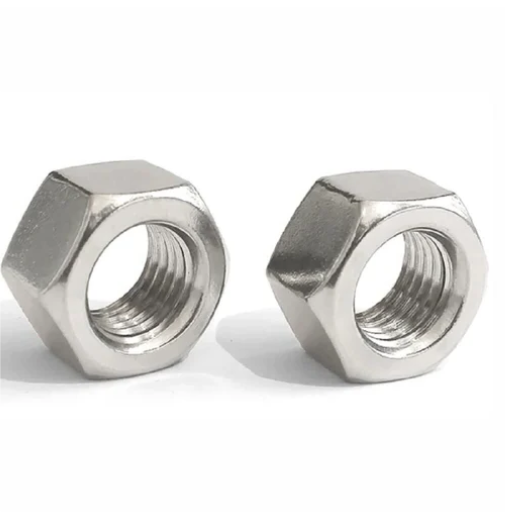
Mechanical properties of materials are fundamental. Like other stainless steel grades, 18-8 stainless steel has good tensile strength. 18-8 stainless steel has exceptional ductility and corrosion resistance, making it a material of choice for many industries. The tensile strength of this stainless steel generally ranges from 70,000 to 100,000 psi. Yield strength falls between 30,000 and 50,000 psi. The balance between flexibility and durability expands its use in various applications. Construction, automotive, and industrial domains truly value the capability of 18-8 stainless steel to maintain strength and performance across varying temperatures.
The Relationship Between Tensile Strength and Durability
Tensile strength and durability are important factors determining materials’ performance in various contexts. A material’s ability to withstand stretching force without breaking or elongating is called tensile strength. Take 18-8 stainless steel, for instance. Its tensile strength is approximately 70,000 to 100,000 psi. These high figures demonstrate the material’s ability to endure heavy loads, vital in construction and other structural environments.
On the other hand, durability describes the extent to which a material can withstand and resist wear, corrosion, and other forms of destruction over an extended period. A good example is 18-8 stainless steel, which is extraordinarily durable due to its composition of chromium (18%) and nickel (8%). This provides passive protection from rust and oxidation due to the formation of chromium oxide on the surface. This characteristic guarantees reliability even in places exposed to moisture, salinity, or other corrosive factors.
Industries like aerospace, automotive, and construction heavily depend on the cornerstone structural properties. For instance, modern construction relies heavily on stainless steel as it preserves structural integrity for a significant amount of time. Recent industry studies highlight that 18-8 stainless steel outperforms its counterparts like carbon steel under high stress due to over 100,000 psi tensile strength and excellent corrosion resistance. This is beneficial as it leads to lower maintenance costs and a longer lifespan for the construction.
Reliability and performance demand 18-8 stainless steel due to its exceptional tensile strength and notorious durability. These characteristics ensure enduring operational life, safety, cost-effectiveness, and ecofriendliness while simultaneously dominating heavy industries.
Exploring Cold Working Capabilities
Mechanical cold work is performed with the material below the recrystallization temperature. This process is key as it increases strength, hardness, and overall toughness while eliminating the necessity for additional heating. It allows refinement on dimensions and surface finish, yielding superior results in detail-oriented products.
Examining Non-Magnetic Characteristics
Due to their atomic structure, alloys such as austenitic stainless steel cannot be magnetized and are, therefore, characterized as non-magnetic materials. This unique property makes them suitable for use in applications where there is magnetic interference.
What are the Physical Properties of 18-8 Stainless Steel?
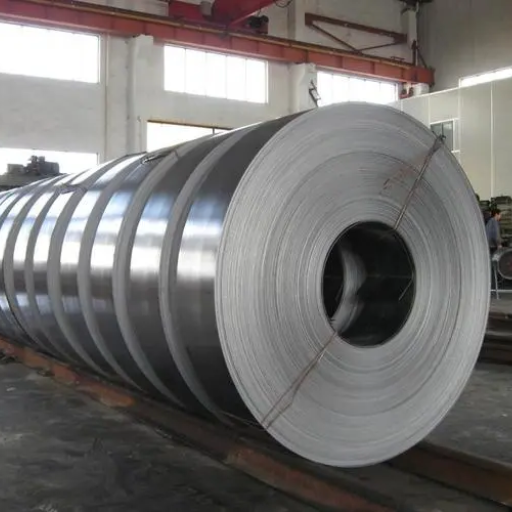
- Composition: Composed of about 18% chromium and 8% nickel, which enhances its strength and ability to resist corrosion.
- Corrosion Resistance: Resistant to rust and oxidation in damp or chemical settings.
- Strength: Provides great mechanical strength and endurance for an almost endless list of purposes.
- Thermal Conductivity: Has lower conductivity to heat than other metals and is now useful in heat-resistant applications.
- Non-Magnetic: Usually nonmagnetic in its annealed state, but may acquire slight magnetism after undergoing cold work.
- Workability: Can easily be fabricated and welded, which increases its applicability in commercial and industrial fields.
Examining Corrosion Resistance
The remarkable resistance to corrosion in stainless steel can be attributed to the alloy’s chromium content. Stainless steel contains chromium, which forms a passive oxide layer on the steel’s surface. This layer protects the underlying metal from moisture, salts, and acids that aid corrosion. For example, alloys such as 304 and 316 stainless steel have high corrosion resistance and can endure various environmental conditions.
Key Data on Corrosion Resistance:
- Chromium Content: As a rule of thumb, stainless steel has at least 10.5% of chromium. This enables the formation of the protective oxide layer. Higher chromium levels, such as in 316 stainless steel (16%–18%), correspond to improved corrosion resistance.
- Molybdenum Addition: This product contains 2% to 3% molybdenum, which increases stainless steel’s resistance to chloride corrosion, an essential feature in industrial or marine applications.
- Comparative Performance:
- 304 Stainless Steel is acceptable for general environments. However, there is a risk of pitting in chloride-rich environments.
- 316 Stainless Steel resists chloride-containing environments better than 304, performing better in saltwater or acidic chemical exposure.
Laboratory Data:
- Studies reveal that 316 stainless steel can withstand long-term exposure to a 3.5% sodium chloride solution with little to no degradation.
- When subjected to seawater environments, the rate of pitting corrosion in stainless steel grade 316 is about 10 times less than that of 304.
Stainless steel is suitable for use in kitchen utensils, construction, the chemical and marine industry, and architecture due to its enduring dependability, which stems from its anticorrosive characteristics.
Assessing Thermal Conductivity
Thermal conductivity is a material property that allows heat to pass through it. Unlike other metals such as copper and aluminum, stainless steel has a relatively low thermal conductivity due to its unique composition. It is suitable for applications where temperature control and heat retention are essential. The stainless steel’s thermal conductivity features and data are included below:
- Thermal Conductivity Range—Stainless steel thermal conductivity ranges from 15 W/m·K to 25 W/m·K, depending on the steel grade and temperature.
- Grade Specific Values—Grade 304 stainless steel has a thermal conductivity of around 16 W/m·K, while grade 316 is slightly lower. Stainless steel thermal conductivity ranges from 15 W/m·K to 25 W/m·K, with a rough value of 14 W/m·K.
- Temperature Dependency – As temperature increases, the thermal conductivity of stainless steel increases, making it temperature sensitive.
- Comparison to Copper—Copper’s thermal conductivity is approximately 400 W/m·K, signifying its outstanding heat transfer capability compared to Grade 304 stainless steel, which has a thermal conductivity of around 16 W/m·K. In contrast,—These features make grade 316 is slightly lower, to stainless steel’s conductivity.
- Applications—These features make stainless steel ideal for components like exhaust systems, thermal barrier parts, and industrial machinery where regulated heat transfer is vital.
The thermal conductivity of stainless steel significantly impacts its importance in distinguishing industries and even engineering designs.
Analyzing Magnetic Properties
The stainless steel’s grade and microstructure determine its magnetic features. Generally, stainless steels of the ferritic and martensitic type are magnetic because of their body-centered cubic (BCC) crystal structure. On the other hand, austenitic stainless steels are usually non-magnetic due to their face-centered cubic (FCC) crystal structure. Nonetheless, the cold-working deformation of most austenitic grades can induce some magnetism. In my opinion, knowing the application and the grade of stainless steel in use helps in understanding the magnetic behavior of stainless steel. Stainless steel determines its magnetic features. Generally, stainless steels of the ferritic and martensitic types
How is 18-8 Stainless Steel Used in Various Applications?
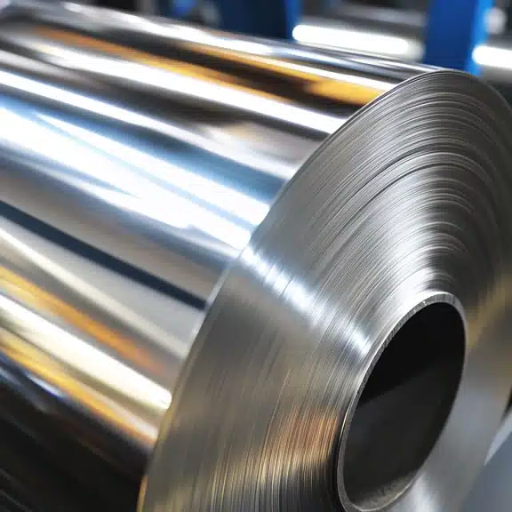
| Application Area | Specific Uses |
|---|---|
| Cookware | Pots, pans, and cooking utensils |
| Kitchen Appliances | Sinks, refrigerators, and cutting tools |
| Construction | Roofing, cladding, and handrails |
| Automotive | Exhausts, grilles, and structural parts |
| Medical | Surgical tools and dental equipment |
| Food Processing | Tanks, cans, and piping systems |
| Aerospace | High-strength parts and structural components |
| Architectural Elements | Frames and decorative metal designs |
| Household Items | Knives, cutlery, and furniture accents |
Utilization in Food Processing Equipment
18-8 stainless steel, which contains 304 and 316 grades, is very popular in the food industry due to its high rigidity and corrosion resistance. It is beneficial when stainless steel comes in contact with food acids, salts, and moisture due to its acidic and alkaline solution resistance.
One significant benefit of grade 18-8 stainless steel is that its smooth surface is non-porous, actively keeping bacteria at bay, which is necessary for compliance with strict food hygiene regulations set forth by the FDA and USDA. Studies reveal that nearly 70% of all food processing tools are made of stainless steel because it is durable and easy to maintain.
Moreover, the ability of 304 and 316-grade stainless steel to endure extreme temperatures makes them ideal for multiple uses like cookware, industrial ovens, and refrigeration units. For instance, grade 316 stainless steel has higher molybdenum content, dramatically improving its resistance to chloride pitting, making it very useful in producing salty and briny foods. The combined strength, hygiene, and low maintenance put 18-8 stainless steel at the front of the line for stainless steels used to process foods in high-demand industrial environments.
Applications in Automotive and Aerospace Industries
Stainless steel 18-8 is also helpful in the automotive and aerospace industries because of its durability, strength, versatility, and ability to resist corrosion. Given below are sources of applications of stainless steel:
- Exhaust Systems
The automotive industry frequently uses stainless steel to replace exhaust headers because of its increased strength at high temperatures and greater resistance to corrosive exhaust gases.
- Structural Components
The frames are made from a thick plate for aerospace cars, and the chassis is assembled with automotives. The stainless steel framework and body help an auto achieve an excellent strength-to-weight ratio.
- Fuel and Hydraulic Lines
Automotives utilize stainless steel for transfer lines. The need for corrosion resistance makes the material a clear choice, especially for hydraulic actuators exposed to extreme conditions.
- Connectors and Fasteners
Stainless steel fasteners and connectors are standard throughout both industries. They are precisely designed to withstand rugged mechanical stress and drastic environmental changes.
- Heat Shields and Insulation Components
Stainless steel is unrivaled for the heat shields or thermal insulating parts in engines and turbines because, unlike other metals, it retains its strength when subjected to high temperatures.
These several properties of stainless steel are critical for sustaining safety, efficiency, and durability in these industries.
Role in Architectural and Construction
In recent years, stainless steel has become increasingly popular in the construction and architectural sectors. This is due to its combination of aesthetic appeal and functionality. Because stainless steel is highly resistant to corrosion, it protects the longevity of structures. It is often used in exterior cladding, roofing, and as support structures in places with high moisture and pollution levels. Recent studies highlight that the stainless steel market in construction was worth USD 33 billion in 2022, projecting a growth rate of over 5.4% annually until 2030. This growth is linked to increased urbanization and a demand for eco-friendly materials.
Additionally, stainless steel is known for having a remarkable strength-to-weight ratio. This allows architectural designers to create sleek and modern stainless steel structures while maintaining durability. Iconic landmarks representing this trait include the Chrysler Building in New York and the Cloud Gate sculpture in Chicago. Stainless steel’s unique recyclable property further proves that it can be utilized to promote eco-friendly building practices. Industry data suggests that over 80% of stainless steel used globally is recycled, aiding in reducing waste and the impact on the environment.
Stainless steel is popular for handrails, elevators, and window frames due to its beauty, durability, and low maintenance requirements. It is widely used in construction, showcasing engineering innovation and sustainable practices. Advancements in fabrication technology also encompass the creation of architectural designs with more complex shapes and patterns, which improves their beauty.
References
- Effect of temperature on the notch sensitivity of a class 303, 18-8 austenitic stainless steel – A study on the impact of temperature on the mechanical properties of 18-8 stainless steel.
- The influence of heat treatment on structure, mechanical properties and corrosion resistance of steel X10CrNi18-8 – Research focusing on heat treatment effects on 18-8 stainless steel.
- The effect of the cold rolling on the structure and mechanical properties in austenitic stainless steels type 18-8 – Analysis of how cold rolling impacts the mechanical properties of 18-8 stainless steel.
Frequently Asked Questions (FAQ)
Q: What is 18-8 stainless steel, and why is it called that?
A: 18-8 stainless steel is an alloy of approximately 18% chromium and 8% nickel. This composition gives it excellent corrosion resistance, making it a popular choice for many applications. It is part of the 300 series of stainless steel, known for being austenitic.
Q: How does 18-8 stainless steel relate to 304 stainless steel?
A: 18-8 stainless steel is a general term for stainless steels with a similar composition, and 304 stainless steel is the most common grade within this category. It is also part of the 300 series and offers excellent corrosion resistance and versatility.
Q: What are the typical applications of 18-8 stainless steel?
A: 18-8 stainless steel is used in various applications due to its excellent corrosion resistance and mechanical properties. These include kitchenware, food processing equipment, chemical containers, and architectural structures. Its easy-to-clean surface also makes it ideal for sanitary environments.
Q: What are the main stainless steel material properties of 18-8 stainless steel?
A: The primary material properties of 18-8 stainless steel include excellent corrosion resistance, good formability, and high ductility. It also has a good balance of strength and workability, making it suitable for various metal products.
Q: How does the nickel content affect the properties of 18-8 stainless steel?
A: The nickel content in 18-8 stainless steel, typically around 8%, contributes to the austenitic structure, which provides the steel with its non-magnetic properties and enhances its corrosion resistance, especially in acidic environments.
Q: What distinguishes 18-8 stainless steel from other grade stainless steels?
A: 18-8 stainless steel, such as grade 304, is distinguished by its high chromium and nickel content, which provides excellent corrosion resistance and versatility. Other grades, like those in the 400 series, may have different properties due to variations in their composition.
Q: Why is 18-8 stainless steel considered an austenitic stainless steel?
A: 18-8 stainless steel is considered an austenitic stainless steel due to its crystal structure, which is achieved through its nickel and chromium content. This structure provides high corrosion resistance, non-magnetism, and good formability, which are characteristics of austenitic stainless steels.
Q: Can 18-8 stainless steel be used in high-temperature applications?
A: Yes, 18-8 stainless steel, particularly grades like 304, can be used in high-temperature applications due to its good oxidation resistance. However, other specialized grades may be more suitable for prolonged exposure to extremely high temperatures.
Q: How does the American Iron and Steel Institute classify 18-8 stainless steel?
A: The American Iron and Steel Institute classifies 18-8 stainless steel within the 300 series, which includes various austenitic stainless steels known for their corrosion resistance and versatility. Grade 304 is the most widely recognized within this classification.



